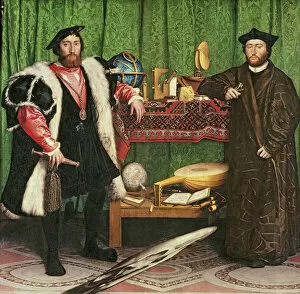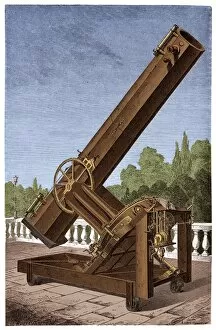Astronomical Instruments Collection
"A Journey Through Astronomical Instruments
All Professionally Made to Order for Quick Shipping
"A Journey Through Astronomical Instruments: From Renaissance Art to UNESCO Heritage Sites" Step back in time and immerse yourself in the world of astronomical instruments. In the famous painting "The Ambassadors" from 1533, we catch a glimpse of these remarkable tools that shaped our understanding of the cosmos. The intricate details on display showcase the precision and craftsmanship involved in creating such devices. Fast forward to Jaipur, Rajasthan, where the Jantar Mantar stands proudly as a UNESCO World Heritage Site. Here, an array awaits your exploration. These magnificent structures were built by Maharaja Jai Singh II in the early 18th century and continue to captivate visitors with their architectural brilliance. Traveling further across continents, we arrive at Volubilis in Morocco. Amongst its ancient ruins lies a terracotta sundial, reminding us of humanity's timeless fascination with measuring time through celestial movements. Delve into history once more as we encounter Jesuit Johann Adam Schall von Bell, whose pioneering work laid the foundation for future astronomers like Ferdinand Verbiest. Their contributions helped shape our knowledge of astronomy during a crucial period marked by scientific advancements. Witnessing "The Crisis in China, " depicted through lithography, reminds us that even amidst political turmoil, astronomy remained an essential pursuit for scholars seeking answers beyond earthly matters. Enter Milan's Brera observatory to find astronomer Schiaparelli engrossed in his studies. His dedication exemplifies how these instruments became conduits for unlocking mysteries hidden within the vast expanse above us. Engravings showcasing dividing engines used to create scales on astronomical instruments reveal yet another facet of this field – meticulous precision required for accurate measurements and calculations. Nicolaus Petri's portrait graces title pages dedicated to practical applications derived from astronomical knowledge – highlighting how these instruments not only expanded our understanding but also found use beyond academia.








